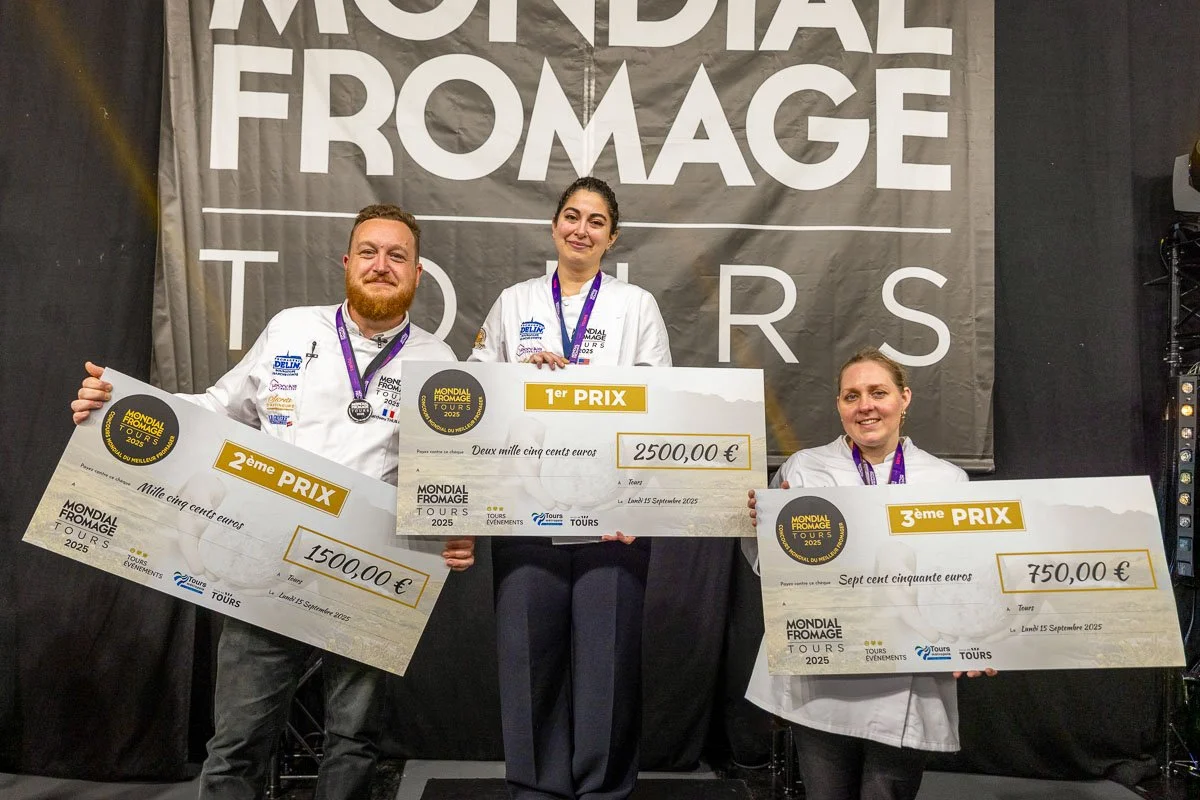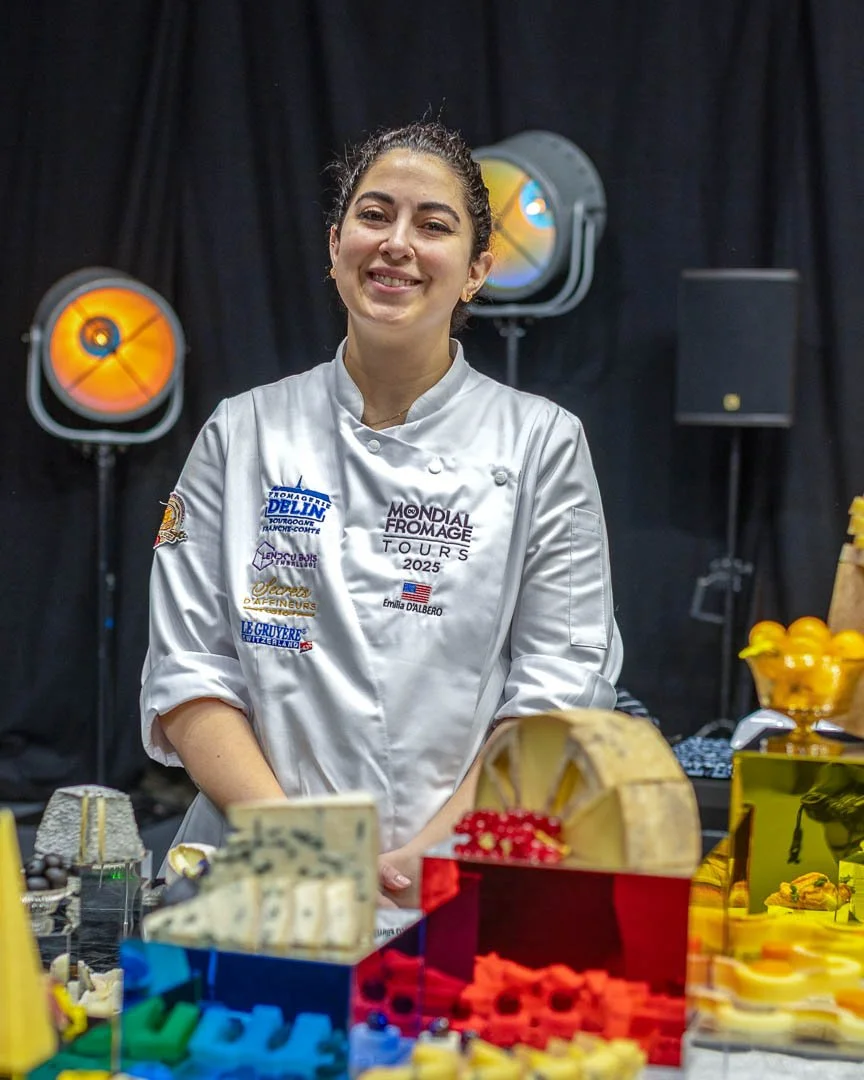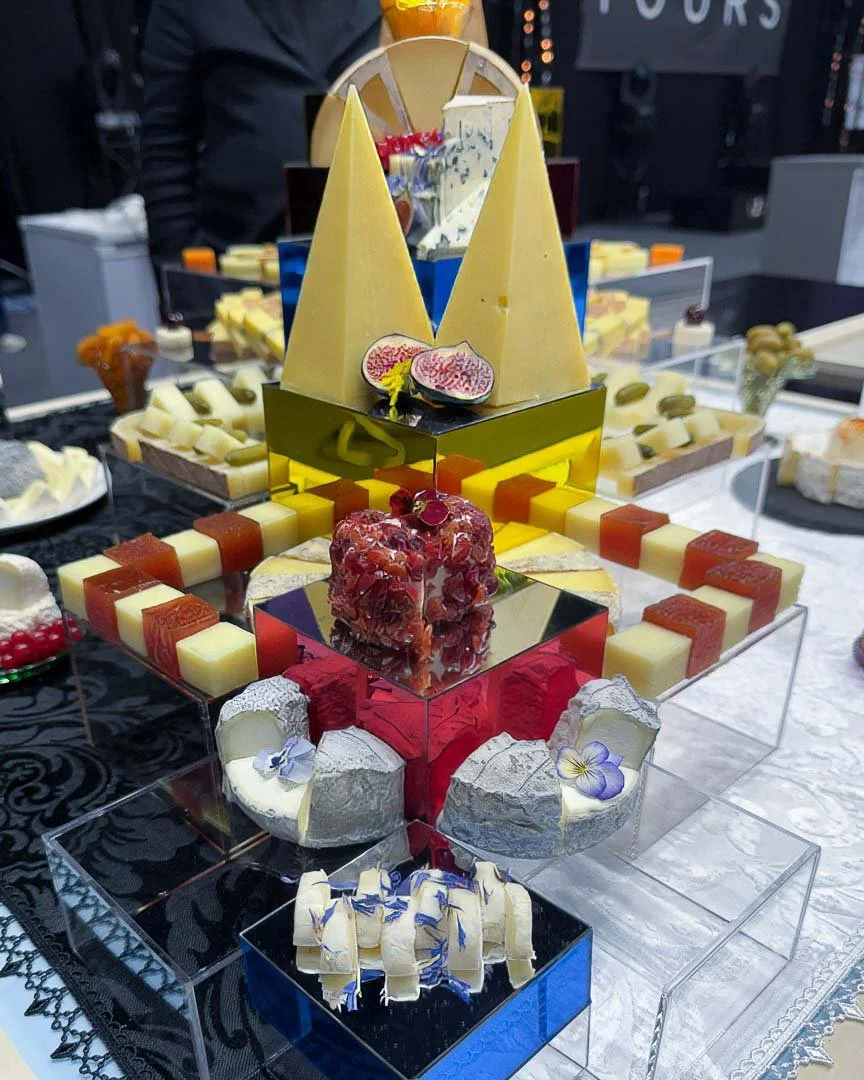First at last! Almost 50 years after American vintners upended the wine world by beating the French, an American cheesemonger has done the same, topping the podium at the recent Mondial du Fromage, a biannual competition informally known as the Cheese Olympics. And the story gets better. Of the three top finishers, two were American women—an astonishing outcome in an arena historically dominated by French men. “The girls got it done,” crowed Emilia D’Albero (above center), the 31-year-old champion from Philadelphia, on Instagram. Courtney Johnson (above right), a Seattle cheese shop owner and the other member of Team USA, placed third in her second appearance at the Mondial.
“Emilia rose to the top because she was prepared, focused and calm,” says Adam Moskowitz, a New York cheese importer who sponsored Team USA and helped organize their coaching.
D’Albero and Johnson have been training for months, since earning their spots on Team USA by winning CMI Masters, a sort of Tournament of Champions for past winners of the Cheesemonger Invitational. Despite living on opposite coasts, they shared training protocols and resources and egged each other on, devoting at least two hours each day to study and practice.
“The most important part of our prep was that we worked together to hold each other accountable,” says Johnson.
Look of a champion: Emilia D’Angelo
Photo/AlexandreAlloul.com
This year’s Mondial, held in Tours, France, included 18 contestants from 14 countries. The grueling day-long contest measures book knowledge, tasting ability, presentation skills and more. With the clock running, contestants have to produce a cheese sculpture and create a themed display with mystery cheeses provided on the spot. They have to nail a written exam, identify four cheeses in a blind tasting (with rinds removed!) and prepare an elegant hors d’oeuvre with no cooking capability on site. There’s more, but you get the idea. It’s a stress test.
“The blind taste test was very challenging,” says Johnson. “There was a cheese that stumped both of us. That is not an auspicious start.”
Several other contestants likewise did not recognize the mystery cheese, an apparently atypical piece of Roquefort. “Everybody thought it was a cow’s milk blue,” says Johnson about the familiar French sheep cheese. I’m reminded of the anecdote about the famous wine writer Harry Waugh who, when asked whether he had ever mistaken a Bordeaux for a Burgundy, replied, “Not since lunch.”
Johnson also feared she had flubbed the oral presentation—a 5-minute dissertation on a favorite cheese—because she couldn’t see the clock and started late. But a judge later told her that her selection—Shadow Blossom from Hofkaserei Kraus –was the best cheese of the day.
The sculpture challenge nearly took D’Albero down. She had a plan for her sculpture, but of the three cheeses provided, one was too small, one was too soft and the third—a two-year-old Mimolette Extra Vieille—was like granite.
“It was evil of them to give us that,” ‘says D’Albero. “It was the hardest, mitiest Mimolette I’ve ever worked with. One person actually cut off their fingertip.”
D’Albero had practiced her sculpture on younger Mimolette but this rock-hard wheel took forever to open. “I was panicking,” admits D’Albero. “I needed to make up time. One of the things they judge you on is cleanliness, and there were crumbs and mites everywhere. One of the judges said, ‘You really need to clean that up,’ and I was like, ‘What did you expect would happen with this cheese?’ That’s when I thought, did I just screw up my chance because I am messy?”
Art of cheese: D’Albero’s themed display
Photo/Anna Rucker
Apparently not. At the end of the day, D’Albero received a 2,500-euro check from Le Mondial organizer Rodolphe Le Meunier and the satisfaction of knowing that she had shattered a glass ceiling as the first American to win the championship.
D'Albero, a Connecticut native, fell in love with good cheese on a family trip to Italy as a teenager. After college, she worked at Eataly’s cheese counter in New York and found her tribe and her passion. “I didn’t know the rabbit hole went this deep,” says D’Albero, who is now the national sales manager for Formaticum, the cheese paper company.
You can read more about 39-year-old Courtney Johnson in the post I wrote when she was preparing to compete in the Mondial two years ago. She recently opened a brick-and-mortar cheese shop in Seattle called Street Cheese.
“For my entire career, it has felt like the American cheesemonger was seated at the kiddie table,” says Moskowitz. “This win puts us at the Chef’s Table.”
D’Albero and Johnson say they hope their victory raises the profile of cheesemongers and encourages consumers to view them as skilled and knowledgeable tradespeople—the same way they view grocery-store butchers.
Victory aside, here’s something else that impressed me: I interviewed D’Albero and Johnson via Zoom while they were still in France and exhausted, and they would not let me end the Zoom before expressing their gratitude to all the people in the cheese industry who helped them—with a special shout-out to Moskowitz.
“This was a huge win for the cheese community,” said D’Albero. “Every one of us won this competition.”



